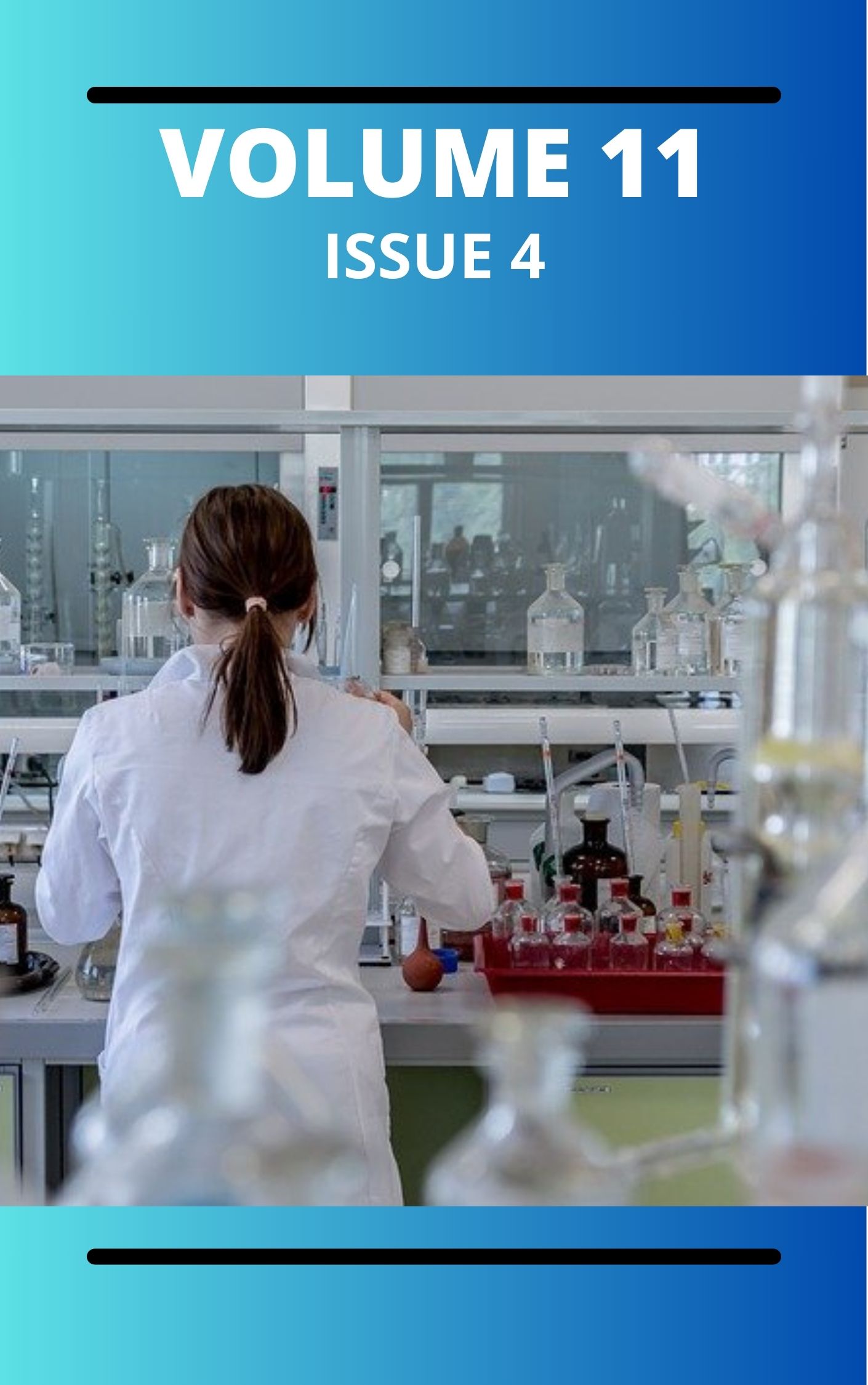Crystal Structure, in Silico Studies and Anti-diabetic Potentials of 3-e-(1,5-dimethyl-3-oxo-2-phenyl-2,3-dihydro-1h-pyrazol-4-yl)hyd -razinylidene]pentane-2,4-dione(hdpp)and its Cu(II) and Ni(II) complexes
DOI:
https://doi.org/10.4314/2cv4bb03Keywords:
Hydrazone, X- ray crystallography, Co(II), Ni(II), Cu(II) and Fe(III) complexes, In silico and antidiabetic studiesAbstract
The hydrazone, 3-E-[2-(1,5-Dimethyl-3-oxo-2-Phenyl-2,3-Dihydro-1h-Pyrazol-4-yl)Hydrazinylidene]Pentane-2,4-dione, HDPP was synthesized by coupling diazotized 4-aminoantipyrine with pentan-2,4-dione at < 5 0C. The Cu(II) and Ni(II) complexes were prepared by refluxing stoichiometric amounts of metal salts and HDPP in ethanol for 6 h at 60 0C. The ligand and complexes were characterized by UV-Vis, IR, NMR, and mass spectroscopies as well as by C, H, N, S elemental analysis, conductivity measurement, quantitative chloride determination and single crystal X-ray diffraction analysis. The compounds were screened in vitro for antibacterial activity against P. aeruginosa, S. aureus, Ecoli(Eco 6), E. coli(13), B. subtilis, S. pneumonia, P. mirabilis, S. intermedius and K. pneumoniae. The compounds were assayed for in silico molecular docking and in vivo anti-diabetic potentials. FTIR data showed shifts in ⱱ(C=O), ⱱ(N=H) and ⱱ(C=N) of the complexes implicating the involvement of these groups in complexation. Proton NMR shifts accounted for the methyl, phenyl and N-H protons of the ligand but indecipherable for the complexes due to paramagnetic effects. Conductivity values of HDPP and complexes showed the ligand and its complexes to be neutral. X-ray crystallographic data of HDPP show the ligand to have orthorhombic crystals with pbca unit cell a = 28.501(4) Å, α = 90°, b = 15.0494(19) Å, β = 90°; and c = 7.3234(9) Å, γ = 90° with Z=8. HDPP and its complexes exist in hydrazo form instead of azo form. It showed no activity against test organisms, but the complexes showed various degrees of sensitivities against the test bacterial strain at 10μg/cm3. Acute toxicity (LD50) tests showed that HDPP and [Cu(HDPP)2Cl2] were non-toxic. In silico studies proved them to be drug candidates for diabetes with good oral bioavailability. In vivo, antidiabetic tests showed HDPP and [Cu(HDPP)2Cl2] to reduce the blood level of diabetic rats to within 61 to 67% better than the control drug glibenclamide within 14 days of treatment.
Downloads
Published
Issue
Section
Most read articles by the same author(s)
- Uchechukwu Susan Oruma, Pius Oziri Ukoha, Collins U. Ibeji, Lawrence Nnamdi Obasi, Obinna C. Okpareke, Ebubechukwu N. Dim, Klaus Jurkschat, Ponnadurai Ramasami, Synthesis, Spectroscopic, Biological and DFT Studies of 2,4,6-Tris(4-Carboxyphenylimino-41-Formylphenoxy)-1,3,5-Triazine and its Trinuclear Dy(III) and Er(III) Salen Capped Complexes , Communication In Physical Sciences: Vol. 7 No. 3 (2021): VOLUME 7 ISSUE 3
- Uchechukwu Susan Oruma, Pius Oziri Ukoha, Lawrence Nnamdi Obasi, Synthesis, Characterization and Biological Studies of Trinuclear Ce(IV) Salen Capped Complex with 5-amino-2,4,6-tris(4-carboxybenzimino)-1,3-pyrimidine , Communication In Physical Sciences: Vol. 5 No. 3 (2020): VOLUME 5 ISSUE 3
Similar Articles
- Uba Sani, Abdulkadir Ibrahim, Akande, Esther Oluwatoyosi, John, Oghenetega Mercy, Murtala, Mohammed Rumah, Assessment of Surface Water Quality in Zaria Metropolis: Implications for Environmental Health and Sustainable Management , Communication In Physical Sciences: Vol. 11 No. 3 (2024): VOLUME 11 ISSUE 3
- Eneni Roberts Inala, Okpo Esio Unanaonwi, Species- Specific- Pathogens of Selected Forest Trees in Tropical Secondary Moist Forest of Otuoke, Nigeria , Communication In Physical Sciences: Vol. 8 No. 4 (2022): VOLUME 8 ISSUE 4
- Agada Livinus Emeka, Saleh Mustapha Babagana, Investigation of Aquifer Vulnerability in Damaturu Using Electrical Resistivity Method , Communication In Physical Sciences: Vol. 9 No. 3 (2023): VOLUME 9 ISSUE 3
- Uduak Aletan, Imaobong Nyambi Akpet, Biochemical Information from the leaves of Pterocarpus mildraedii , Communication In Physical Sciences: Vol. 7 No. 4 (2021): VOLUME 7 ISSUE 4
- 1. Anthony I. G. Ekedegwa, Evans Ashiegwuike, Enhanced Firefly Algorithm Inspired by Cell Communication Mechanism and Genetic Algorithm for Short-Term Electricity Load Forecasting , Communication In Physical Sciences: Vol. 12 No. 3 (2025): VOLUME 12 ISSUE 3
- Olawale Babatunde Olatinsu, Segun Opeyemi Olawusi, Mathew Osaretin Ogieva, Electrical Resistivity Characterization of Peat and Clay Profiles at a Suburb of Ota, Southwest Nigeria , Communication In Physical Sciences: Vol. 12 No. 1 (2024): VOLUME 12 ISSUE 1
- Olusegun Sowole, Adesoji A. R. Adebambo, Radiological Assessment of Primordial Radionuclides in Crab Species from Igbokoda River in Southwest of Nigeria , Communication In Physical Sciences: Vol. 7 No. 1 (2021): VOLUME 7 ISSUE 1
- Ase M. Esabai, Edikan E. Akpanibah, Sylvanus K. Samaila, On Investment Model for a CARA Pension Scheme Member with Return of Contributions Clause for Mortgage Housing Scheme , Communication In Physical Sciences: Vol. 11 No. 3 (2024): VOLUME 11 ISSUE 3
- Joseph Amajama, Ahmed Tunde Ibrahim, Julius Ushie Akwagiobe, Atmospheric Humidity Impact on the Strength of Mobile Phone Communication Signal , Communication In Physical Sciences: Vol. 11 No. 4 (2024): VOLUME 11 ISSUE 4
- Samson Osinachi Nwadibia, Henry Patrick Obong, Ephraim Okechukwu Chukwuocha, Analytical Solutions of the Schrodinger Equation with q-Deformed Modified Mobius Square Potential Using the Nikiforov-Uvarov Method , Communication In Physical Sciences: Vol. 9 No. 4 (2023): VOLUME 9 ISSUE 4
You may also start an advanced similarity search for this article.




